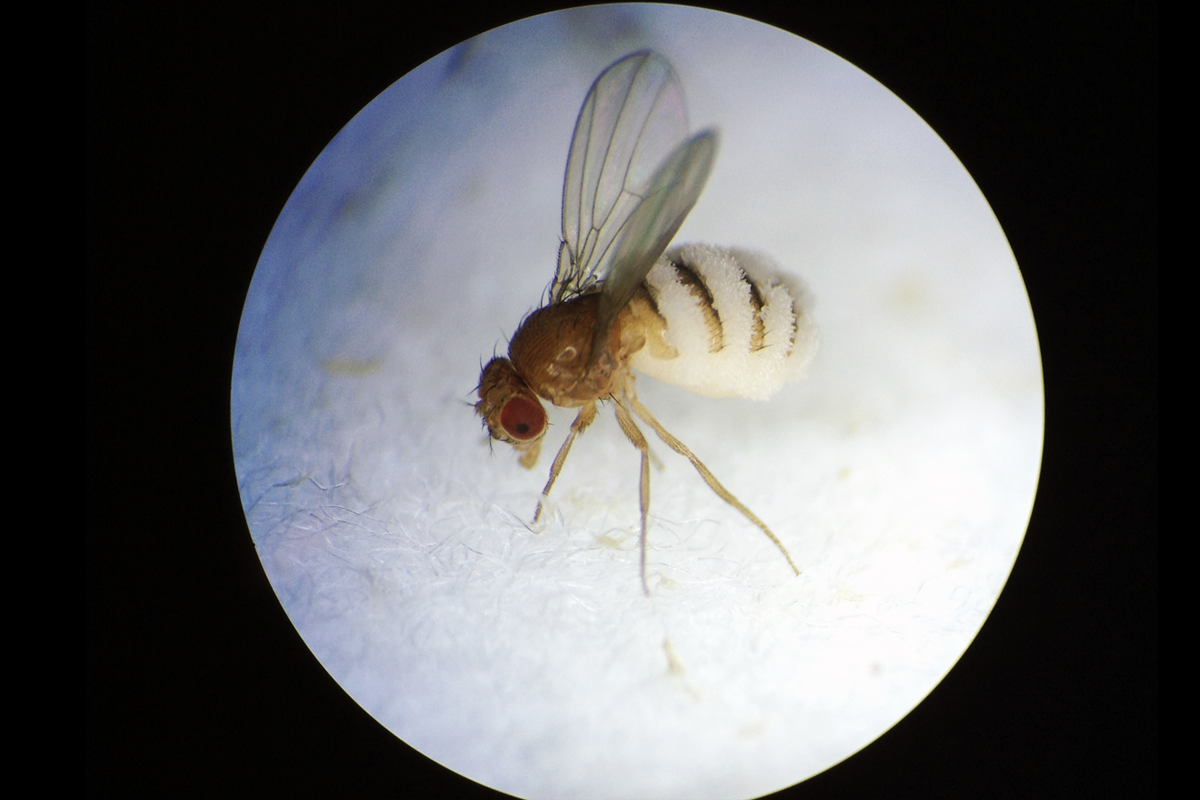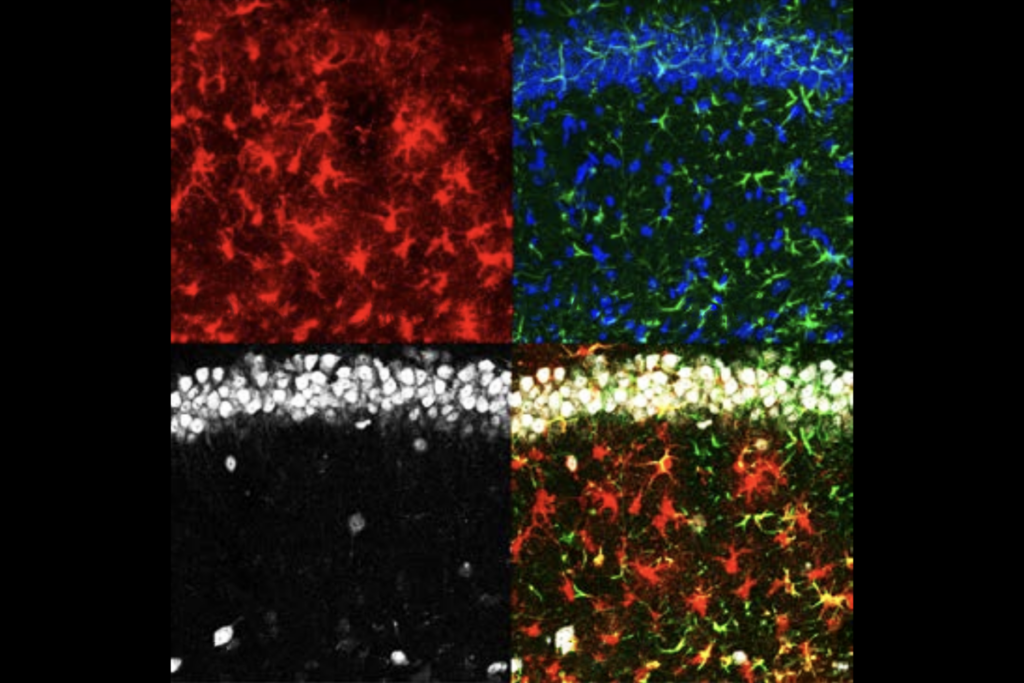Zombie cicadas may be all the rage this summer—with a fungal infection ripping through two emerging broods and rendering them “sex-crazed,” as one headline recently put it. But the responsible organism, Massospora cicadina, isn’t the only parasitic puppet master in the insect world.
Neuroscientists are increasingly interested in studying the interactions of “mind-controlling” parasites and their hosts’ brains, a new analysis of abstracts presented over 12 years at the International Congress for Neuroethology suggests.
“We are trying to get other people excited and make the argument that this is sort of an orthogonal way to study neuroscience, because parasites are the ultimate neuroscientists,” says Carolyn Elya, assistant professor of molecular and cell biology at Harvard University.
Elya fell into her work on mind-bending parasites about a decade ago while completing her doctoral work at the University of California, Berkeley. Some of the wild Drosophila melanogaster flies she caught in her backyard—to study their microbiome—had already succumbed to Entomophthora muscae (its genus name derives from the Greek for “insect destroyer”). To help spread its spores, the fungus compels the flies to climb as high as possible, a phenomenon called “summit disease.” Then the flies raise their wings just before dying so the spores can disperse from the abdomen.
The fungus was previously known to primarily affect muscoid flies, especially the house fly, and there were only a few reports of it infecting Drosophila—so Elya immediately spotted an opportunity to exploit the fruit flies’ “immense genetic toolkit” to study the neural mechanisms involved. Since then, she has discovered how the infection may hijack the flies’ secretory neurons and circadian pathways.
The Transmitter spoke with Elya about her work on this unusual system and what neuroscientists can learn by studying host-parasite interactions.
This interview has been edited for length and clarity.
The Transmitter: How did you decide to bring this system into the lab?
Carolyn Elya: I was really excited that the fungus was in Drosophila, which has this immense genetic toolkit. So the fact that it was infecting this animal that I could experimentally manipulate I thought was really powerful. That was not something that people had really been able to use before, because people were finding the fungus in other insect hosts, like aphids and moths, which do not have a lot of experimental tools available.
TT: What have you learned so far about the neural mechanisms of summiting behavior?
CE: We found the most salient neurons that were important for this behavior were these pars intercerebralis to corpora allata neurons. These are neurons that are neurosecretory with giant cell bodies that sit right along the midline of the brain. We silenced a subset of 12 of these cells, and it led to a pretty marked decrease in summiting, so this is the main player in the summiting pathway.
Circadian pathways are also involved. In the case of the fly, when you mutate the circadian genes, you actually get reduced summiting. We thought that might speak to the flies’ circadian system somehow being hijacked, if you will. If you think from the fungus’s perspective, if you want to drive increased locomotion in your hosts, the circadian clock is very tightly linked to locomotion output. If you can basically hijack that circuitry, then you can increase locomotion.
TT: Why is this important to know?
CE: Fungi have evolved these very precise strategies in order to drive specific behaviors. That’s not something a human researcher can do at this point. So in that sense, they’re sort of the best neuroscientists that exist. If we can understand how they work, then I think we have a better idea of how brains work. I think there’s also potential to learn not just about how brains naturally produce behavior, but how to manipulate neural circuits, which might be helpful in the context of human disorders and situations where our brains are not working as we’d hoped that they would.
Also, I think one of the things that’s really exciting about studying this system is that we know that fungi just make tons of different chemicals. They’re amazing at chemistry, and there’s so much of that space that hasn’t been explored yet. Thinking about how they might achieve behavior manipulation, it likely involves chemicals. It is wild that these fungi produce these compounds that people use to medicate themselves, like this methamphetamine sort of cousin that the cicada fungus Massospora makes.
TT: What’s next in this line of research?
CE: I think there’s so much to explore in this system. People have known about it for a long time, but it’s been challenging to do anything in the lab. We’re working on following up on summiting behavior and trying to find the molecular drivers of summiting.
Another thing we’re trying to do is figure out how we can manipulate the fungus. I don’t want to say we’ll ever reach experimental parity on the fungal side, because there’s just so many years of effort in fly genetics and research, but having tools on the fungal side so that we can actually knock out genes and label the fungus genetically could help actually establish causality between fungal genes and fly behaviors.




